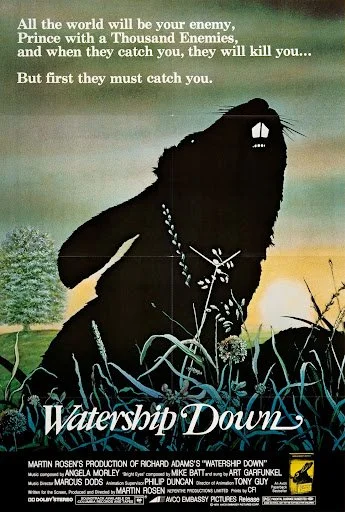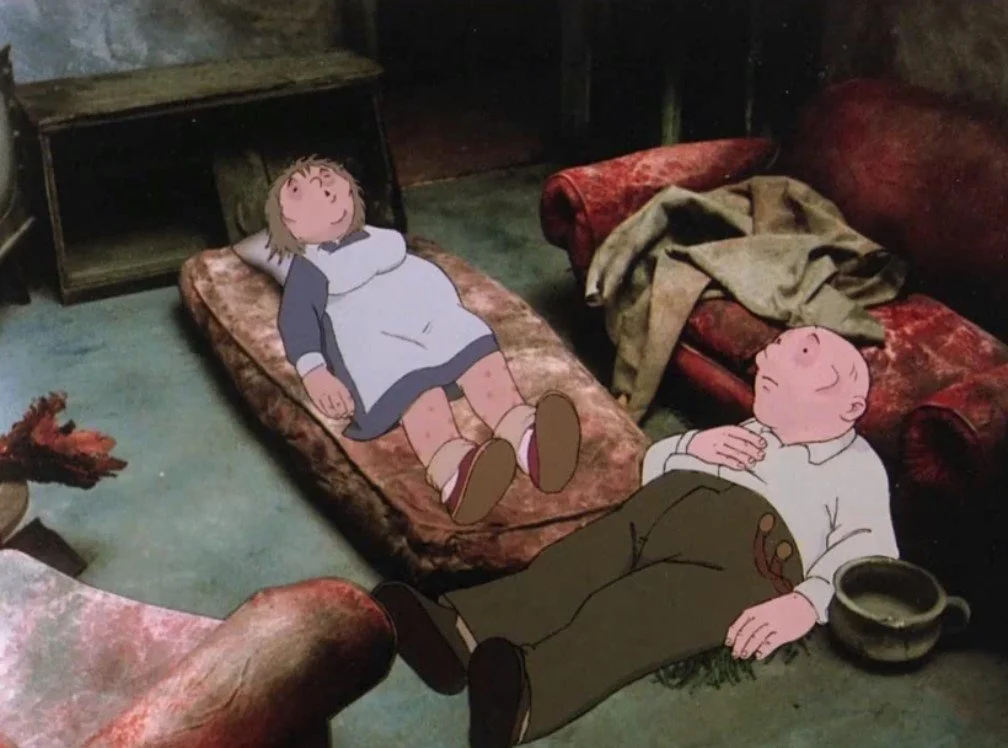Watership Down (1978)
If you’ve been following our updates, you’re probably expecting the Dissection of Watership Down we’ve now delayed twice. Well, Eric’s been working on it, but he’s been writing in the wrong direction. Happy accident, though: turns out, what he wrote is a complete and coherent thought, and it fits well into our efforts to mix up our Judgments section with some different content. So that’s what this is: an experiment for our Judgments section and a teaser for the article we’ve delayed twice already. Enjoy!
1978’s Watership Down has something of a reputation, especially among Boomers and Xers, as a devastating experience for a children’s movie.
Critics like Tasha Robinson for the Dissolve have noted that its cute opening scene of a rabbit origin myth is a total fake-out that gives way to a gruesome tale of cute-bunny death. And Ed Power over at the Independent notes that the film “arguably traumatized an entire generation.”
Personally, I’m a little surprised anyone who saw this poster or watched this trailer would feel tricked:
It’s a beautiful day. All is calm and peaceful in the meadow— or is it?
If you look closely—very closely—you’ll discover … a world of ruthless tyranny and brave rebellion, a world of incredible courage and mortal fear.
This all comes in a baritone voice over images of less-cute-than-usual cartoon bunnies savaging each other. The trailer also shows Fiver’s vision of a field filling up with blood, as well as his horrified face as he watches a hawk snatch another rabbit. Our narrator even overstates the point, calling Watership Down “the most unusual and provocative film you’re ever likely to see.” Sure, he never screams, “THIS IS A HORROR MOVIE!” but come on.
I never saw it when I was a kid, but I grew up with a pretty clear understanding of death from a young age, due to family realities I wrote about last year in a weird personal essay thing on 2020’s Spontaneous. My brother was born with a diseased heart whose complications snowballed into more complications with his kidneys, which eventually took his life at the age of twenty-three. Doctors hadn’t expected him to live past two, which means he knew his whole life, as did my parents and I, that he could die at any time.
That fear had a way of infecting other parts of how I thought about the world. I often couldn’t sleep at night, thinking nervously about people I knew getting hurt, about failing tests at school, about friends secretly disliking me, about being left alone, about not being left alone.
As a kid, I would’ve related to Watership Down’s Cassandra figure Fiver—not because I had terrible psychedelic visions of impending doom (I didn’t), but because I was full of anxiety. Always waiting for terrible things to happen. All that anxiety needs a release. Watership Down portrays violence and death as real and horrific parts of life. Fiver is a young rabbit haunted by death who must learn to cope with and accept an unmerciful world, in which the end can come at any moment. For me, Watership Down wouldn’t have been terrifying; it would’ve helped me make sense of my anxieties.
That’s my Judgment on why Watership Down is a perfectly appropriate children’s horror movie—for children who know what they’re getting into and whose parents have talked to them about death.







